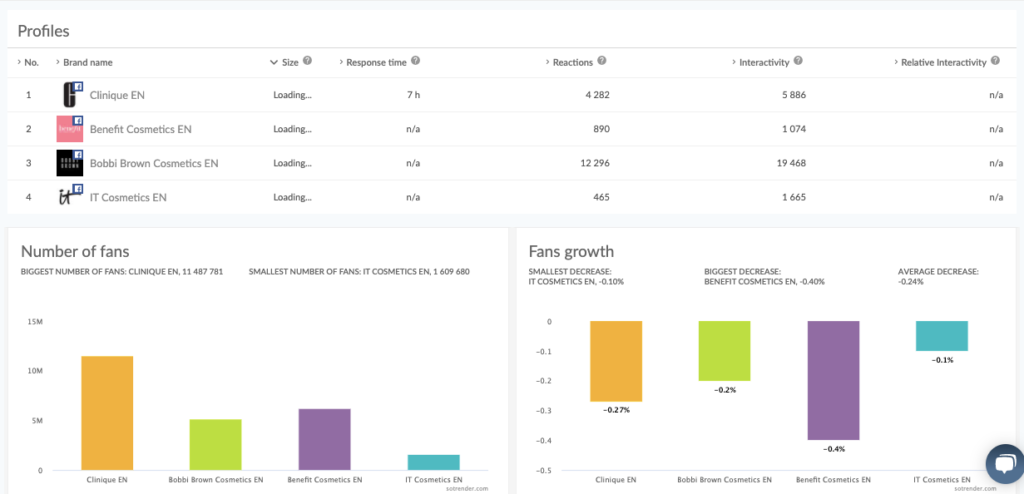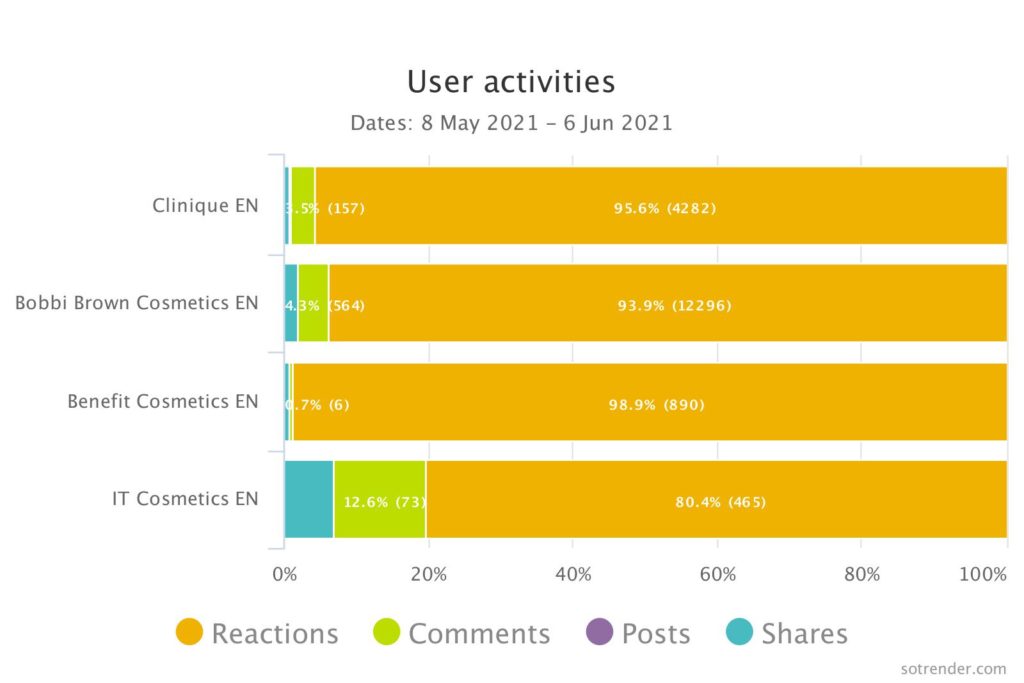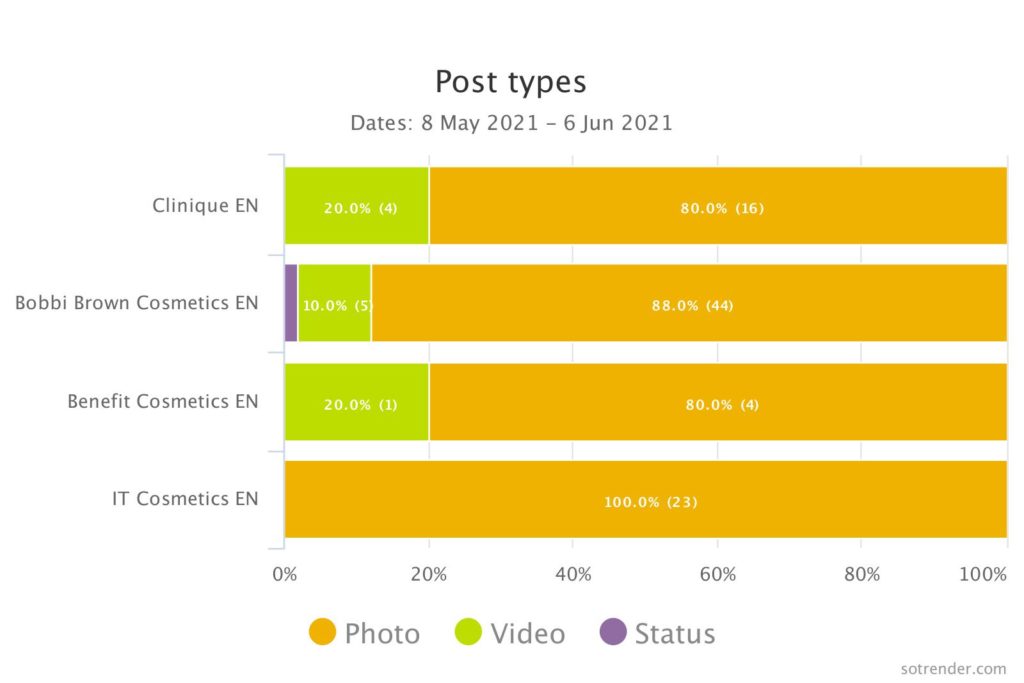Analyzing what your competitors are up to is not just recommended, but a must. Knowing what content actually gets them attention and engagement will help you plan your own content strategy. To cut a long story short, researching your competitors’ successes and failures can only help you improve and get ahead.
We’ll show you how you can use Sotrender to analyze the competition’s profiles in a few clicks.
Why should I analyze the competition’s profiles?
There could be an entire blog post dedicated to this topic! Actually, you’ll find that many social media marketers have written at least something about the importance of benchmarking or the different strategies available. There are multiple ways that you benefit by knowing what your competitors are doing. We’ll break them down into a few general points here.
- Comparing profile growth helps you figure out if they are growing at a faster rate than your profile.
- Knowing what your and their most engaging content is will help you improve your content strategy.
- Checking when both of your engagement peaks helps you find better posting times.
These three components are actually really important. You can reach informative conclusions just by checking a few key metrics in a social media analytics app.
Now we’ll go over what you can see when you want to compare Facebook profiles.
What can I see when I analyze the competition’s profiles?
Since this is our most popular platform, let’s start with Facebook.
Facebook displays a lot of information about likes, interactions, shares, and comments publicly. That makes it possible for us to show you side-by-side comparisons of your own profile and your competitors’. However, since you don’t have access to their Insights profile, you won’t be able to see everything about their reach. Still, you’ll be able to see things like:
- Response times
- The number of followers and follower growth
- Reactions in a given period of time
- Interactivity and Relative Interactivity
- Brand activities over time
- Post types
- User activities
Here’s the first thing you’ll see when you open up your comparison group in the application:

And this is what you can expect to see when you compare their content strategy vs. user engagement:


Based on the graphs you see in the app, you’ll have a pretty good overview of your competition’s organic strategy. You’ll know when they post, what they post, what their best posts were, how long it takes them to respond to their followers, and how fast their profile is growing.
This is generally the quality of graphs and data representation you can expect from Sotrender.
What social media platforms can I analyze in Sotrender?
Firstly, you should know that by using Sotrender, you can easily compare Facebook Pages. Unfortunately, Instagram only allows you to check the performance of your own profile, and YouTube has tightened what third-party applications are allowed to present (and for how long).
However, it’s still possible for our AI team to download your competition’s public data from Instagram and compare those profiles for you. This is because we have access to Instagram’s API, know how to extract, clean, and analyze the data. These aren’t the easiest tasks to learn, so it’s easier for you to have dedicated professionals prepare a competitive Instagram report for you.
Does that sound relevant to you? In that case, feel free to message our Sales team to learn more about what’s included in the Instagram report! They are happy to help out and answer any of your questions and concerns.



